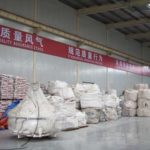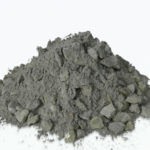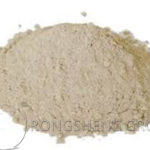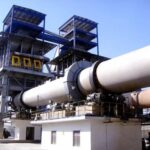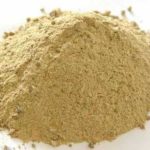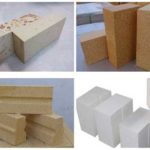Jiaobaoshi-based castables are non-metallic materials made by uniformly mixing refractory aggregates and powders, binders, and admixtures of a certain grade. They belong to amorphous refractory materials and are important basic materials that can be widely used in high-temperature industries. Amorphous refractory materials constructed by pouring can be roughly divided into: Jiaobaoshi-based castables, alumina-based castables, corundum-based castables, lightweight insulation castables, etc. The use of amorphous refractory materials has the advantages of high construction efficiency, seamless furnace lining, prevention of gas leakage in the furnace, and applicability to the construction of complex configurations.

Does Aluminate Cement Have Any Effect on the Performance of Coking Gem-Based Castables?
In recent years, with the development of my country’s economy, aluminate cement has played an important role in refractory materials with its unique advantages. High alumina cement (formerly known as alumina cement), also known as refractory cement, is professionally called aluminate cement. It is widely used as a binder for castables due to its advantages such as fast strength development, good wear resistance, acid and alkali-aggregate reaction resistance. The hydration products generated by its water reaction can effectively bind particles and have high density after molding. At the same time, the more complex the use environment of the castable, the higher the requirements for the material. Aluminate cement can be well combined with other materials, has good fluidity, and can improve the construction performance of the castable itself. Therefore, the effect of aluminate cement dosage on the performance of coking gem-based castables has attracted widespread attention.
During the heating and baking process of the castable, the hydration products are dehydrated and decomposed, making the material loose. For different application environments, the amount of aluminate cement added to the castable will change within a certain range. Therefore, the effect of heat treatment temperature on the strength of castables with different addition amounts of aluminate cement is also different. Aluminate cement is one of the important factors to ensure the mechanical properties, performance and good rheological properties of castable materials.
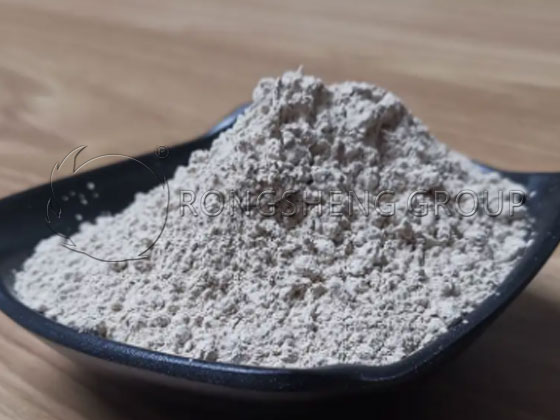
Effect of Aluminate Cement Dosage on the Performance of Pyrope-Based Castables
Amorphous refractory materials are also called second-generation refractory materials. They can be constructed according to actual conditions. They have excellent performance and save energy. They gradually occupy the main position of refractory materials and have broad market prospects. Aluminate cement was selected as the research object, and a single-factor experiment was used as the research method. The effects of different amounts of aluminate cement added at different calcination temperatures on the bulk density, flexural strength, compressive strength, and permanent line change of pyrope-based castables were studied. The influence of aluminate cement heat treatment temperature on the performance of pyrope-based castables was explored. The experiment studied the effects of different amounts of aluminate cement added on the performance of castables, providing a reference for the preparation of castables with different amounts of aluminate cement added.
- (1) The flexural and compressive strengths of pyrope-based castables gradually increase with the increase of cement addition. After calcination at 800 ℃, the pyrope-based castables showed strength loss. When the cement addition was 10 %, the compressive strength loss was the largest, i.e. 7.94 %.
- (2) With the increase of cement addition, the volume density of jiaobaoshi-based castable gradually decreases. After heat treatment at 110 ℃, the volume density of jiaobaoshi-based castable decreases from 2.41 g·cm–3 to 2.395 g·cm–3.
- (3) After heat treatment at 110~1 300 ℃, the linear change shrinkage rate of jiaobaoshi-based castable increases. With the increase of cement addition, the linear change rate changes more. When the cement addition is 5 %, the linear change rate changes the least, which is only 0.15 %. After calcination at 1 300 ℃, the linear change rate of jiaobaoshi-based castable decreases from –0.23 % to –0.42 %.
- (4) Experiments and engineering applications show that a jiaobaoshi-based castable that meets engineering practice is prepared by using 7 % cement addition. Its flexural and compressive strength, volume density, and linear change rate all meet the actual engineering needs, with superior performance and good plasticity.
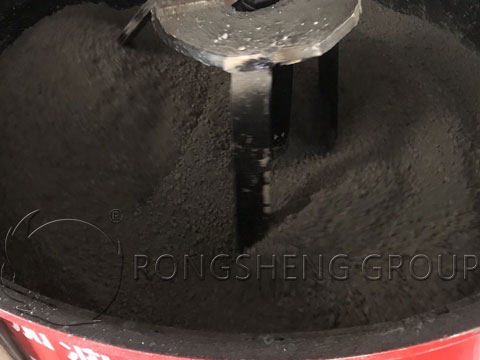
Why can’t Refractory Cement be Used to Lay Refractory Bricks?
In the process of laying refractory bricks, refractory mud is usually used for laying, and refractory cement cannot be used for laying. Although both are refractory materials, there are great differences in the actual application process.
Refractory mud, also known as fire mud or joint material, is a joint material specially used for refractory brick laying. It is composed of refractory powder and admixtures. It has good plasticity, convenient construction, high bonding strength, strong corrosion resistance, and high refractoriness. Refractory cement, also known as aluminate cement or high alumina cement, is a necessary material for preparing refractory castables. In refractory castables, it is usually used for bonding between powders, and at the same time, it can harden the refractory castables.
Precautions for the Use of Refractory Cement
- During the construction process, in order to prevent the setting time of aluminate cement from getting out of control, it is generally not allowed to be mixed with silicate cement, lime and other cementing materials that can precipitate calcium hydroxide. The mixing equipment must be rinsed clean before use.
- In addition to making refractory concrete, the sand and gravel ratio of aluminate cement is the same as that of ordinary cement. When the concrete is in direct contact with the soil, it should be isolated with waterproof materials (such as plastic cloth and felt, etc.).
- Aluminate cement should be naturally cured within three to six hours after molding, and water should not be supplied. Otherwise, aluminum glue will be continuously precipitated when it encounters water, causing it to not harden. At the same time, carbonization caused by early water loss should be prevented, which will make the concrete surface loose and powdery, and cracks will be generated inside, seriously affecting the strength of the concrete. Therefore, water must be supplied in time for moist curing three to six hours after molding. The temperature is 15-25℃. When it exceeds 25℃, cooling measures should be adopted. The curing period is not less than three days, and steam curing is generally not allowed.
- The mixing amount of concrete each time should be controlled to be used up within 20 minutes. Mixing water should be drinking water with a pH value of 7±0.5, and stirring should be continued. Hardened concrete cannot be reused, otherwise the concrete may not harden.
- Aluminate cement shall not be added with any additives without testing.
- When concrete is used inside a container, ventilation must be ensured inside the container. When used outdoors, avoid direct sunlight, otherwise the strength of the concrete will be greatly reduced or even have no strength.
- Aluminate cement shall not be used in contact with unhardened silicate cement concrete, but can be used in contact with silicate cement concrete with demolding strength. However, the joint should not be kept wet for a long time, otherwise the concrete will expand and the structure will lose strength.
- Aluminate cement shall generally not be used to pour large-volume concrete, and the thickness shall not exceed 0.3 meters. If this limit is exceeded, water curing must be carried out immediately after the concrete hardens, and cooling measures must be taken. When used in reinforced concrete, the steel bars should be coated with a flammable layer to reserve expansion joints, and the protective layer of reinforced concrete should not be less than 60mm.
- When selecting refractory aggregates and powders, clinkers that meet the design requirements (chemical composition, particle size grading, control of harmful substances, etc.) must be selected for batching.


